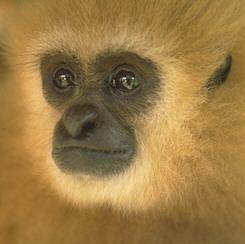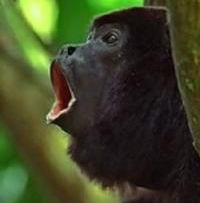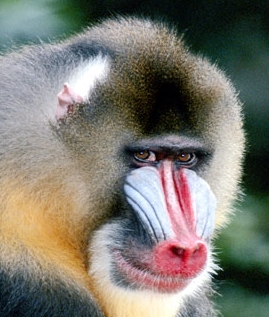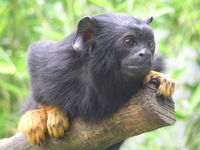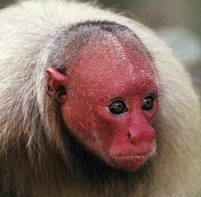
About thirty feet left of the left Ape Cracks (below) is another crack with a block in the middle. Climb over a small step, then up to a steep crack/corner (5.6) and up to the block with a crack on either side. Pass this on the right (5.6). (The left side of the block is 5.8.)

These are two parallel cracks about 8 feet apart at the far left (east) end of the cliff.
Right Ape Crack: Easy, barely fifth class at the crux.
Left Ape Crack: The crux is a steep move with big jugs over a block, still pretty easy, probably 5.3.
A 60 meter rope reaches from the base to the tree at the top. Both of these climbs have adequate but not excellent pro in the lower, 4th class section, but they do have good pro at the crux. View Anchor Photo

A fun climb with a cool chimney. Great climb for that old-school feeling. This crack is the first continuous crack to the right of the Ape Cracks. An identifying feature is a deep slot or chimney at about two-thirds height. The first pitch is 4th class, belay beneath the first tiny roof. The second pitch goes through the chimney and follows the crack to the top.
Gear: Medium to large nuts. Cams to #4 Camalot.
Caution: The large white chockstone above the chimney is not secure; it moves when shaken. Climb under this chockstone into the wide slot and chimney up behind it.

This route follows the long continuous crack through the center of the East Wall. A challenging climb through three consecutive roofs. The first is a 5.7 bulge, the second goes through a notch, 5.8. The final steep section is split by two cracks. The right hand crack requires an awkward move up onto a tiny pedastel and then a short but steep 5.9 hand crack. (The left hand variation is yet unclimbed). The climbing is strenuous, but the pro is great; you can place a camming device above you in the crack before committing to the move. Belay from blocks on the summit.
Gear: Medium to large nuts and cams.

A great crack climb where good hand-jam technique will have you stylin'. This route is about 10' left of Chimpanzee, and goes up through three steep sections. These roofs appear intimidating from underneath, but the climbing turns out to be easier than it looks from below. The cracks are perfect hand size and will accept all the protection you can carry.
Climb 160' of easy fifth class and belay beneath a short overhanging roof. The overhang is easier than it looks. Climb upward over bulges through the steep rock, enjoying positive holds and foot jams. After about 40' the difficulties ease up. The last move mantles right on to the summit. Large blocks about 30' back from the top are available for an anchor.
Gear: Medium to large nuts, big hexes, doubles of #2 & #3 Camalot, one #4. The first belay takes smaller cams (e.g., #.5 - #1 Camalot).
New leader tip: If you construct your top anchor at some distance from the edge of the cliff, you might want to move forward and belay near the edge. You'll have better communication with the follower and you'll reduce rope drag over the edge. How to extend an anchor

Perhaps the best route on the cliff and certainly the most obvious. Follow a crack from the base all the way to the top. A huge white right facing dihedral is an obvious landmark at the top of the climb. The first pitch is easy fifth; belay where the rock steepens to vertical. If you have a 200' rope you can belay at a more comfortable stance about 30' lower. A #2 Camalot or equivalent protects the last move out of the crack onto the top of the left-hand wall. View Action Photo. After pulling over the top, move up and left about 12' to a left-facing flake with a tiny tree growing out of the top. An anchor can be constructed with Orange, Red, and Yellow Aliens or equivalent. View Anchor Photos
Gear: Medium nuts. #0.5 - #4 Camalot.
New leader tip: The top anchor on this climb can be challenging to construct for those unaccustomed to gear placements. Consider walking to the top and preplacing the gear you need for the anchor, then descend and climb the route.
